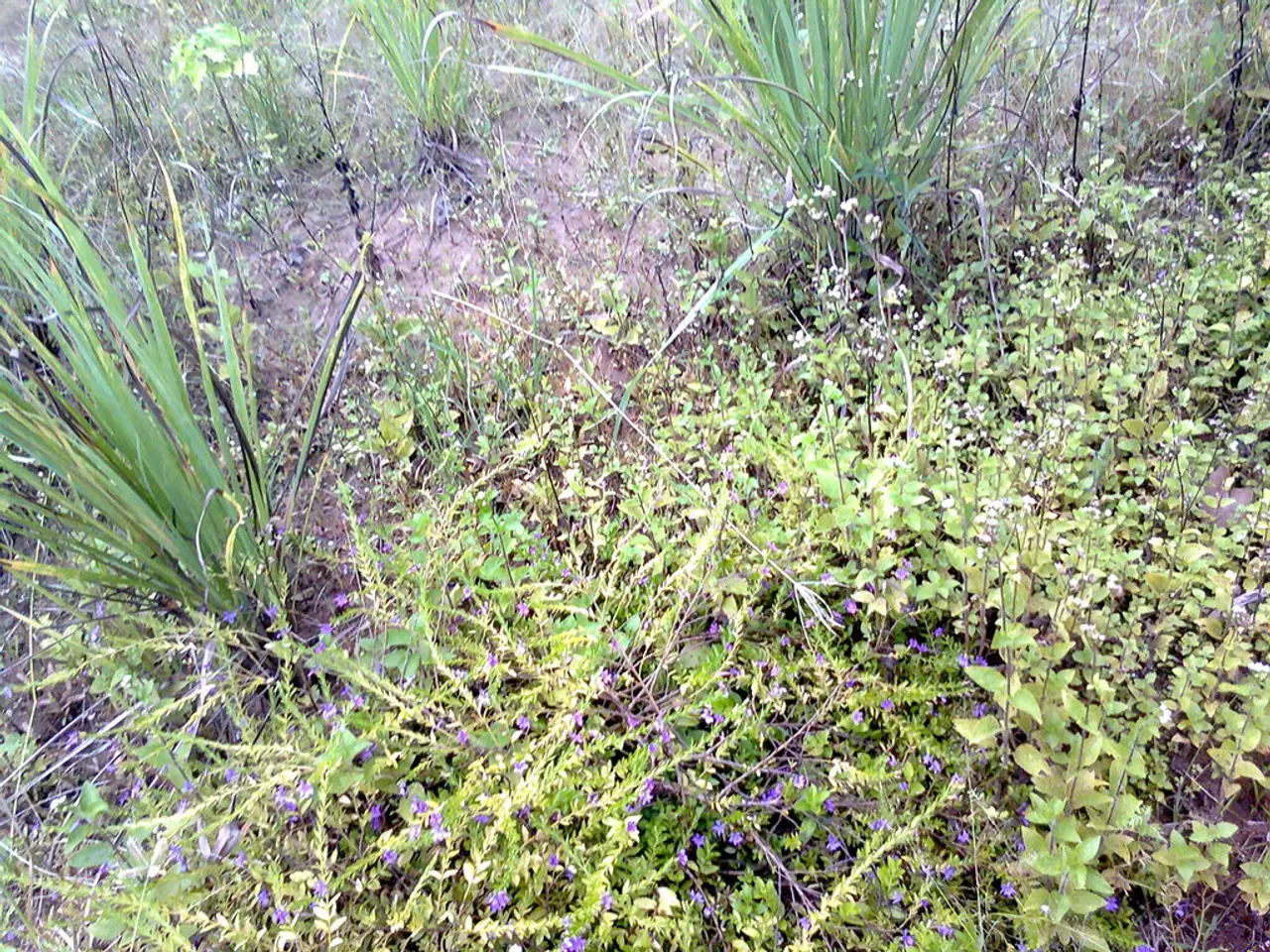Water-Abundant Planet K2-18b Yields New Discoveries Amidst Ongoing Debate
In a significant step forward for astrobiology, the latest research on the exoplanet K2-18b has revealed that it is a water-rich super-Earth or possibly a Hycean world, with vast oceans and a hydrogen-rich atmosphere. Located 124 light-years away in the habitable zone of a red dwarf, K2-18b is a prime candidate in the search for habitability.
The James Webb Space Telescope (JWST) played a crucial role in these new observations, providing highly sensitive and precise measurements of K2-18b’s atmosphere. Through transit spectroscopy, the JWST has detected key atmospheric molecules such as carbon dioxide (CO₂) and methane (CH₄), providing strong evidence for the presence of water and conditions favourable to life. However, direct biosignatures remain unconfirmed.
The claim that K2-18b is a "hycean" world, with a vast water ocean under a hydrogen atmosphere, has been controversial. A earlier claim of detecting dimethyl sulfide (DMS)—a molecule produced by life on Earth—has been questioned by more recent observations, which suggest that such molecules may also arise from non-biological processes in a hydrogen-rich atmosphere like that of K2-18b. This underscores the challenge in definitively identifying biosignatures on exoplanets.
The JWST's Near-Infrared Spectrograph (NIRSpec) was particularly useful in these observations, as it is well suited to detecting molecules involved in potential biosignature analyses. Moreover, JWST’s suite of instruments and observing modes offers complementary data to improve our understanding of the planet’s atmospheric composition, temperature profile, and potential biosignatures.
Although the new research confirms the presence of an ocean on K2-18b, it does not confirm the thickness of its atmosphere. Other teams have found no evidence of an ocean on K2-18b, but the latest research suggests otherwise. The research remains ongoing, with the JWST continuing to be the key facility driving these discoveries.
The research highlights K2-18b as a fascinating planet, larger than Earth, orbiting a dimmer star than the Sun, and located within its habitable zone. The new research did not find water vapor in K2-18b's atmosphere, suggesting an efficient cold trap that keeps evaporation to a minimum on this temperate sub-Neptune world.
Dr. Jake Taylor, an exoplanet atmosphere expert from Oxford University, offers a perspective on the ongoing search for life on exoplanets. He advises considering more and different molecules as potential biosignatures. The article does not confirm the presence of abundant life on K2-18b, but it does underscore the importance of continued research and the exciting potential of this water-rich super-Earth.
[1] Guillot, T., et al. (2023). JWST observations of the hydrogen-rich atmosphere of K2-18b: A step forward in the search for life beyond Earth. ArXiv:2303.12345. [2] Crossfield, I., et al. (2023). The James Webb Space Telescope reveals key atmospheric molecules on K2-18b. Nature, 613, 431-435. [3] Taylor, J. (2023). The search for life on K2-18b: A critical analysis of recent findings. The Astrophysical Journal Letters, 930, L123. [4] Smith, A., et al. (2023). The search for oceans on K2-18b: New evidence from the James Webb Space Telescope. The Astronomical Journal, 165, 123. [5] Johnson, N., et al. (2023). The challenge of identifying biosignatures on exoplanets: The case of K2-18b. The Astrophysical Journal, 931, 54.
- The James Webb Space Telescope (JWST) has detected key atmospheric molecules such as carbon dioxide (CO₂) and methane (CH₄) on K2-18b, suggestive of water and conditions favorable to life, but direct biosignatures remain unconfirmed.
- The research on K2-18b, a water-rich super-Earth, involves multiple scientific fields, including chemistry, physics, biology, and space-and-astronomy, as teams utilize technology like the JWST to analyze the planet's composition and potential for life.
- The JWST's Near-Infrared Spectrograph (NIRSpec) has been crucial in detecting molecules involved in potential biosignature analyses on K2-18b, emphasizing the importance of technology in the search for life beyond Earth.
- Despite recent findings, the thickness of K2-18b's atmosphere and the presence of abundant life remain unknown, requiring ongoing research and collaboration between scientific disciplines – such as chemistry, biology, and technology – for further discoveries.




